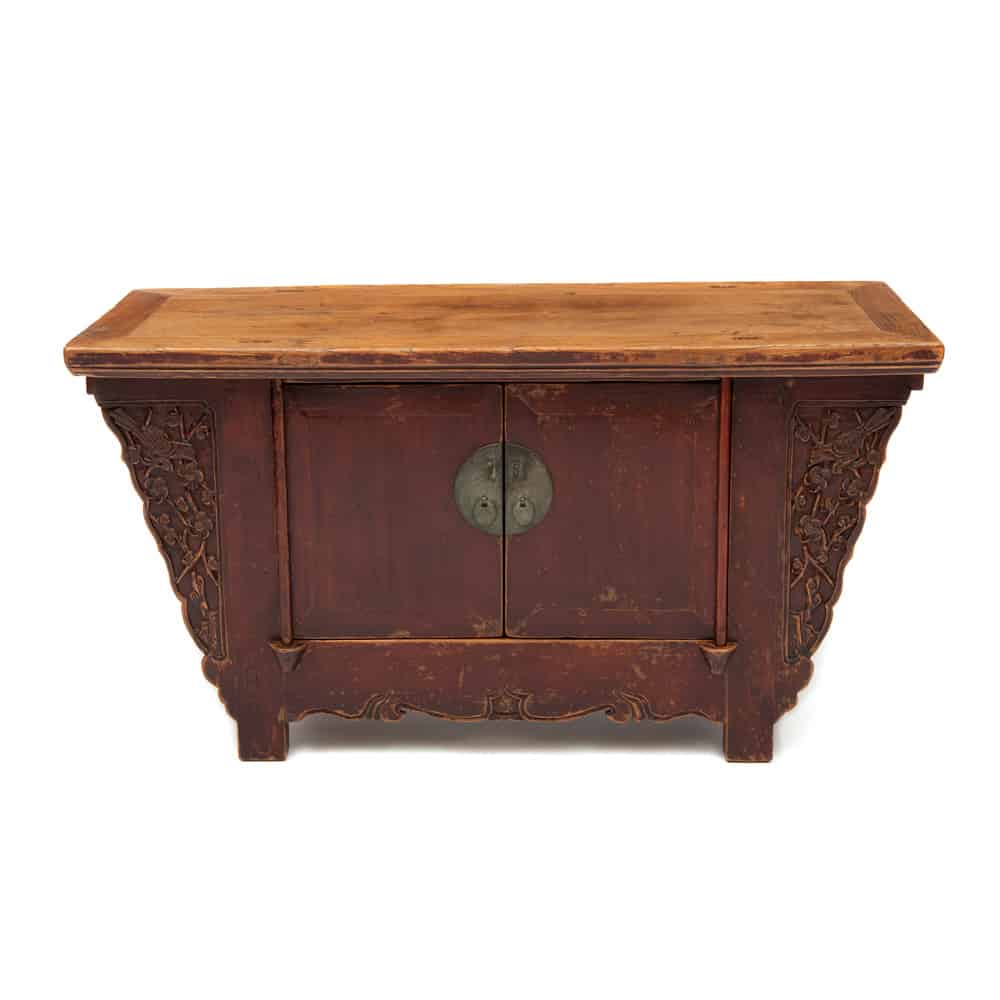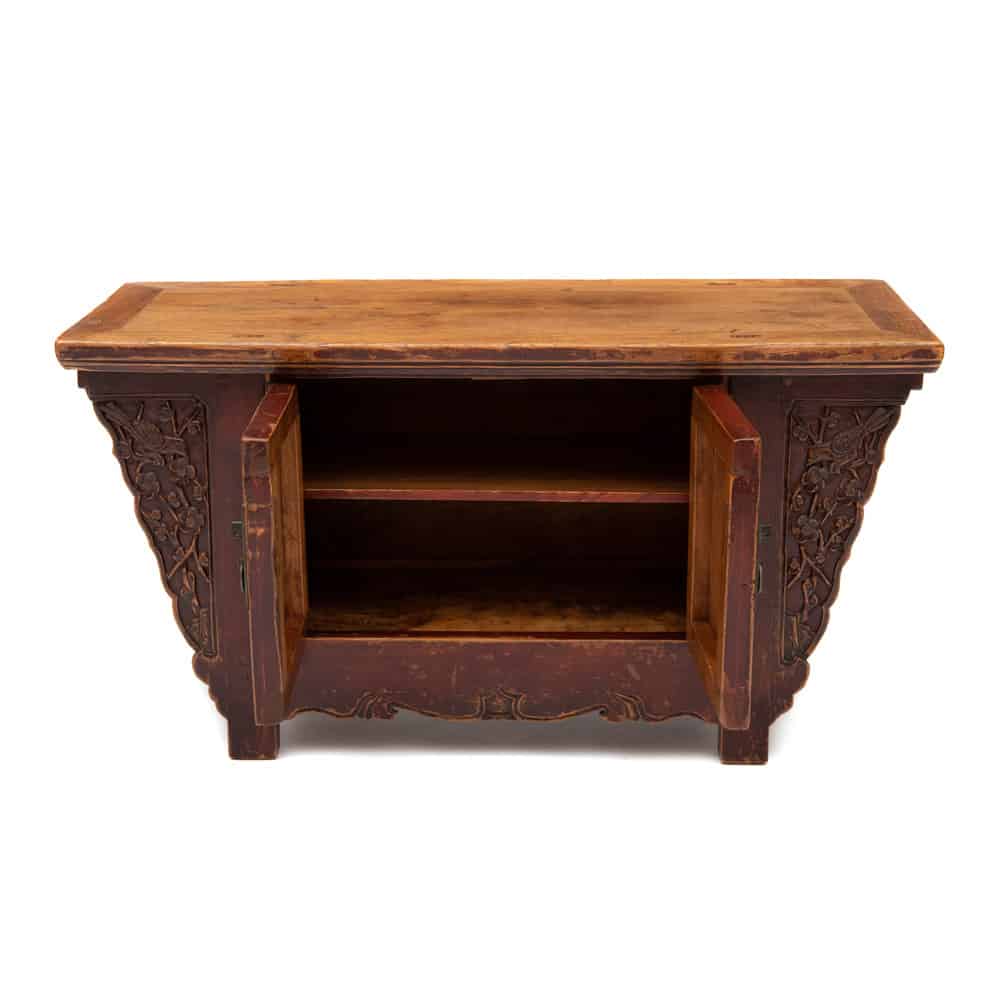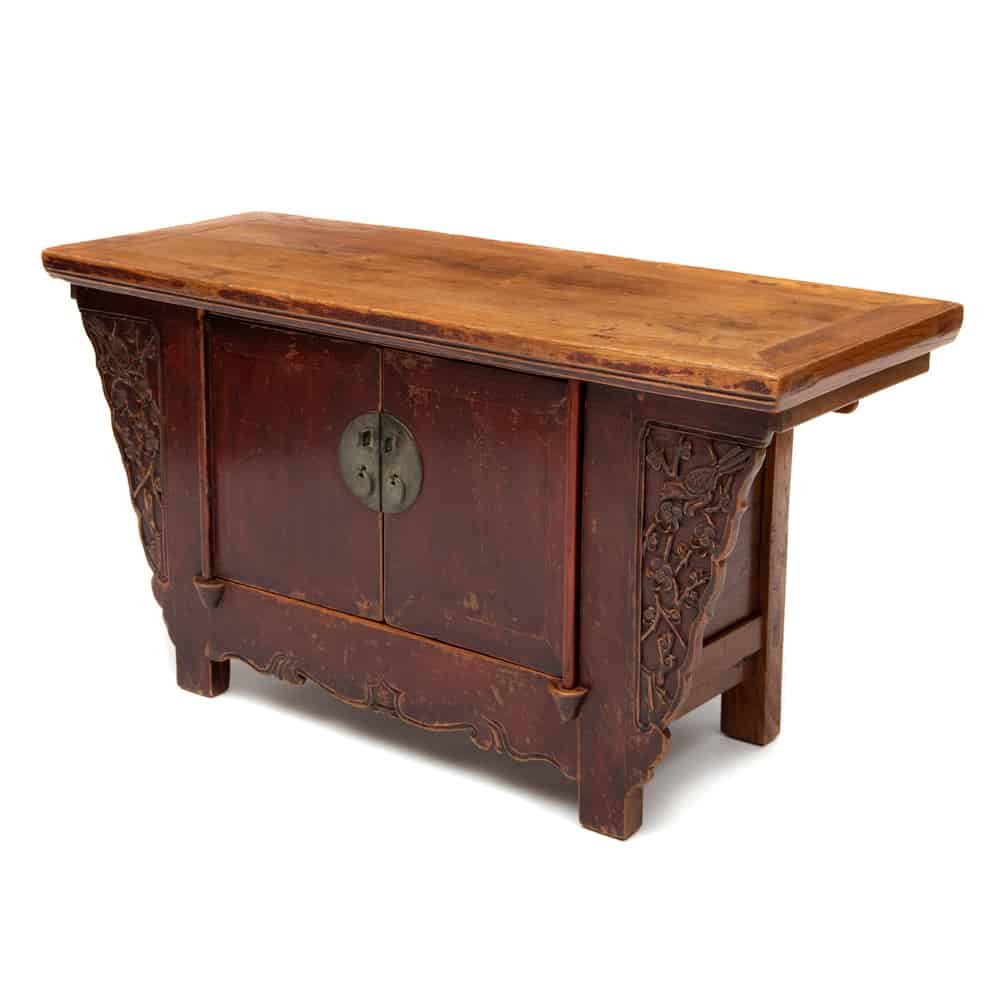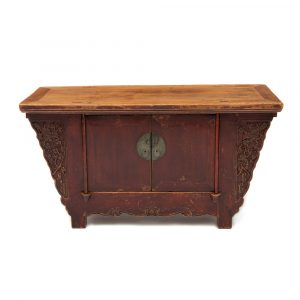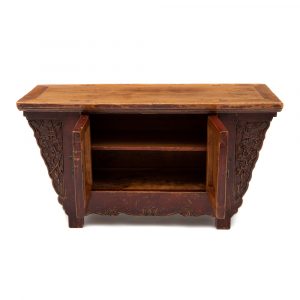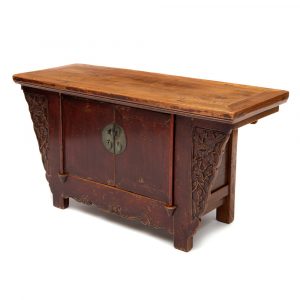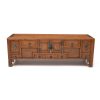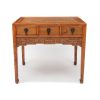Kang cabinet with magpie and plum blossom carving
$1,950.00
19th century
- birch
- 100cm wide x 38cm deep x 53cm high
Very interesting piece of furniture. The carving is magpie and plum blossoms, a combination that forms an idiomatic expression xi shang mei shao. Literally it means the magpie (xi que) is on the top of the plum blossom (mei shao). Another meaning is may your happiness (xi) reach (shang) the top of your eyebrows (mei shao). Magpie and plum blossom is therefore a wish for great happiness.

